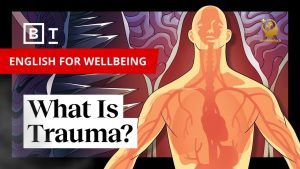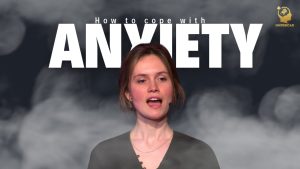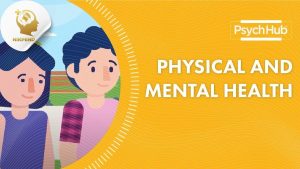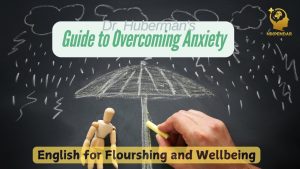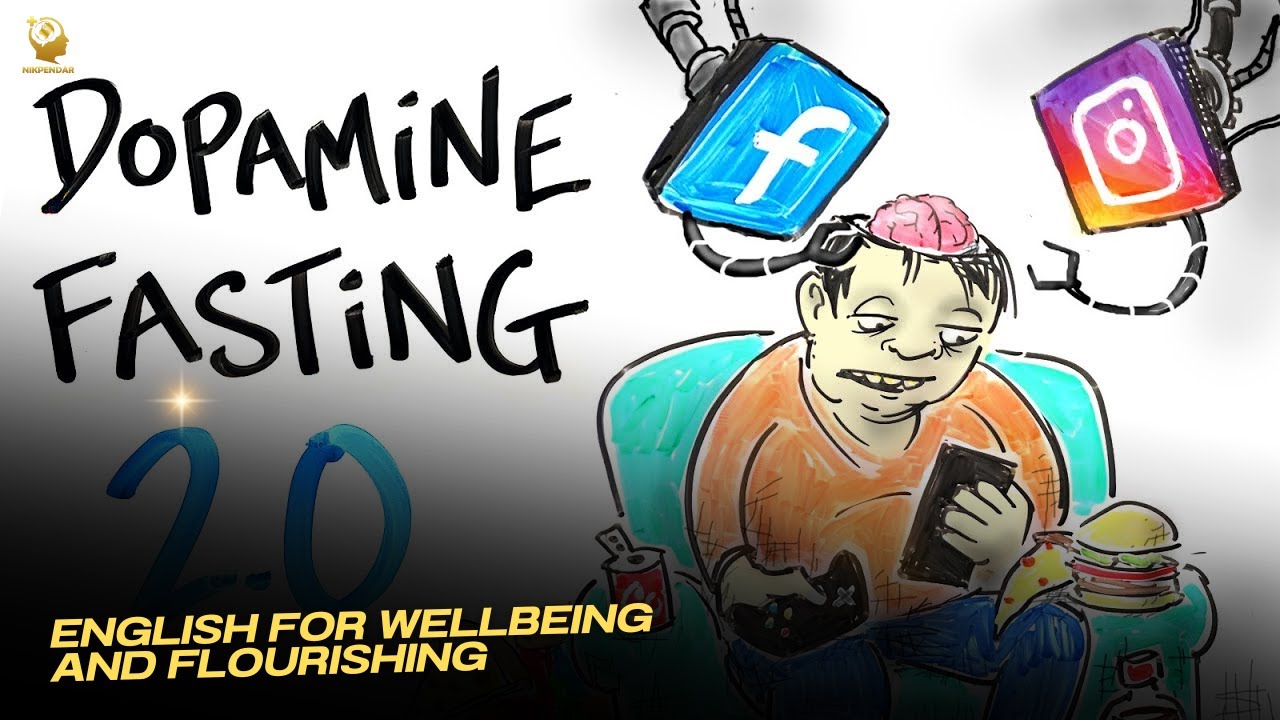
Beginner
- Understanding Dopamine: What is dopamine? The video says it’s a brain chemical. What does it make us want?
- Pleasure Rush: The video talks about things that give us a “short rush of pleasure.” Can you name two examples from the video?
- Basic Dopamine Fasting: What is the simple idea behind dopamine fasting? What do we try to avoid?
Intermediate
- Dopamine Fasting 2.0 Explained: The video talks about dopamine fasting 2.0. How is this different from just reducing dopamine? Explain it in your own words.
- Changing Habits with Stimulus Control: The speaker gives examples of stimulus control (like putting your phone in another room) to change habits. Think about a small habit you have that you’d like to change. How could you use stimulus control to help you?
- Motivation and Pleasure: The speaker mentions that sometimes things that used to excite us no longer do. Why does the video say this happens? Have you ever experienced this feeling?
Advanced
- CBT and Dopamine Fasting: The video states that dopamine fasting 2.0 is based on Cognitive Behavioral Therapy (CBT). Discuss how the CBT principles of stimulus control and exposure and response prevention (ERP) are applied in this practice to help manage impulsive behaviors. Provide examples for each.
- The Ethics of Stimulation: The speaker says, “Big companies are able to leverage our cravings and make trillions of dollars off of keeping us addicted.” What are the ethical implications of this statement for companies? What responsibility do individuals have in navigating this “world designed to stimulate our emotions”?
- Restoring Motivation and Long-Term Goals: According to the video, how can dopamine fasting potentially help restore motivation by increasing dopamine receptors? How might you apply this scientific understanding to approach your long-term goals or improve your engagement with less instantly gratifying activities?
Beginner
Task 1: Understanding the Problem
Listen to the first part of the video (until “designed to keep you lost”).
- What is the main problem the speaker talks about in the beginning? (Choose one)
- a) People don’t have enough money.
- b) Companies make us feel sad.
- c) Companies try to make us addicted and lose our free will.
- What is one example the speaker gives of something that gives us a “short rush of pleasure”?
Task 2: What is Dopamine?
Listen to the section where the speaker explains dopamine (around “What’s that you say? Well first we need an understanding of dopamine.”).
- What is dopamine associated with?
- Give one example from the video of when your brain releases dopamine.
Task 3: Simple Solutions
Listen to the part about dopamine fasting and how it helps (around “That’s where dopamine fasting comes in”).
- What is the general idea of dopamine fasting?
- Name one simple way the speaker suggests to reduce time on your phone.
Intermediate
Task 1: Dopamine Fasting 2.0 Explained
Listen to the section where the speaker defines dopamine fasting 2.0 (around “Dopamine fasting 2.0 is better defined.”).
- How is dopamine fasting 2.0 different from the common misunderstanding of “reducing dopamine”?
- What is dopamine fasting 2.0 based on?
- What does it aim to reduce?
Task 2: The Power of Cravings
Listen to the first few minutes of the video, where the speaker talks about companies and cravings.
- According to the speaker, how do “big companies” leverage our cravings? What is their goal?
- What happens to a person if they “don’t have a plan for themselves”?
Task 3: Cognitive Behavioral Therapy (CBT) and Examples
Listen to the part where Cognitive Behavioral Therapy (CBT) is introduced and explained (around “so what is the science behind dopamine fasting 2.0”).
- Explain the concept of stimulus control using the phone ringtone example.
- Briefly describe Exposure and Response Prevention (ERP) with the Instagram example.
Advanced
Task 1: The Modern Environment and Personal Agency
Analyze the speaker’s argument that “we live in a world that is designed to stimulate our emotions.” Discuss how this design, according to the speaker, impacts individuals’ autonomy and “free will.” Then, explain how the practice of dopamine fasting 2.0 is presented as a way to regain control and foster personal agency in this environment.
- Key points to address: “designed to stimulate,” “short rush of pleasure followed by emptiness,” “control you like a puppet,” regaining “power back,” and the role of “dopamine fasting 2.0.”
Task 2: Applying the Habit Change Framework
The speaker describes a method for changing habits based on Charles Duhigg’s “The Power of Habit” (identify behavior, reward, trigger, make a plan). Choose a common “bad habit” (e.g., mindless snacking, excessive social media scrolling, procrastination). Explain how you would apply each step of this framework to address that habit, using specific details and examples for your chosen habit.
- Key points to address: behavior, craving/reward, trigger (using the five categories), and the new plan.
Task 3: Receptors, Motivation, and Long-Term Impact
Explain how dopamine fasting (specifically the 2.0 version) is hypothesized to restore motivation by impacting dopamine receptors. Describe the process of “up-regulation.” Based on this explanation, and the overall message of the video, discuss the potential long-term benefits of integrating dopamine fasting practices into one’s life beyond just overcoming immediate addictions.
- Key points to address: dopamine receptors, up-regulation, less stimuli for pleasure, restoring motivation, long-term benefits (e.g., enhanced appreciation, better focus).
Beginner
Task 1: What is Dopamine?
According to the text, what is dopamine and what does it do in our brain?
- Choose the best answer:
- a) It’s a type of food.
- b) It’s a brain chemical connected to wanting new rewards.
- c) It makes you sleep.
Task 2: Companies and Our Emotions
The speaker says big companies try to make us addicted. How do they do this? Give two examples from the text of what companies use.
- Hint: Look at the first paragraph.
Task 3: Reducing Phone Use
The video suggests ways to use your phone less. Name two simple actions you can take to reduce the time you spend on your phone.
- Hint: Look for “solutions” related to your phone.
Intermediate
Task 1: Dopamine Fasting 2.0 Explained
The text talks about “dopamine fasting 2.0.” In your own words, explain what dopamine fasting 2.0 is. How is it different from just trying to reduce your dopamine levels?
Task 2: The Ice Cream Example
Explain the example of eating an ice cream cone. What does this example teach us about dopamine and how our brain reacts to new things versus familiar things?
Task 3: CBT and Breaking Habits
The practice of dopamine fasting 2.0 is based on Cognitive Behavioral Therapy (CBT). Describe how CBT helps people reduce addictive behaviors, using one of the examples (like the phone ringtone or looking at attractive girls on Instagram) from the text.
Advanced
Task 1: The Maze of Modern Stimulation
The speaker claims we live in a world “designed to stimulate our emotions” and that without a plan, we “will be at the mercy of companies who will play on your impulses to control you like a puppet.” Discuss this idea. How do companies leverage our cravings, and what does the speaker mean by “sacrific[ing] your free will searching for happiness in a maze that’s designed to keep you lost”?
Task 2: Up-regulation and Restoring Motivation
According to the transcript, how does dopamine fasting help restore motivation? Explain the scientific concept of “up-regulation” of dopamine receptors in your answer. Provide a real-world example given in the text that illustrates how this process can make simple things more pleasurable.
Task 3: The Routine and Reward Replacement Strategy
Detail the “routine and reward replacement” strategy for changing habits, as explained in the latter part of the transcript. What are the key steps involved in this process (identifying behavior, craving, trigger, and making a plan)? How does this methodical approach help individuals overcome addictive behaviors?
Beginner
Task 1: Our Devices and Our Brains
The video says that big companies design things to make us want more. It also talks about how much time people spend on their phones.
- How much time do people use their smartphones each day?
- Why do big companies want us to keep looking at our phones and social media?
- What is one simple thing you could do to use your phone less?
Write your answers in 3-5 sentences.
Task 2: What is Dopamine?
The video explains a brain chemical called dopamine.
- What is dopamine associated with?
- Give an example from the video (like ice cream) to explain how dopamine works when something is new.
Write 3-4 sentences.
Intermediate
Task 1: Understanding Dopamine Fasting 2.0
The video introduces “dopamine fasting 2.0.”
- Explain what dopamine fasting 2.0 is and what it is not. How is it different from simply reducing dopamine levels?
- Based on the video, what is the main goal of dopamine fasting 2.0?
- What psychological approach is it based on?
Write a paragraph (around 80-120 words).
Task 2: Breaking Bad Habits: Identify Your Routine
The video gives a method for changing bad habits by identifying a behavior, a reward, and a trigger. Think about a small habit you’d like to change (e.g., eating too much sugar, checking your phone too often).
- Describe the behavior you want to change.
- What reward do you think you are craving from this behavior? (e.g., sugar high, distraction, social connection).
- What often triggers this behavior for you? (e.g., time of day, seeing something, feeling bored).
Write about 100-150 words, clearly describing each part of your chosen habit.
Advanced
Task 1: The World Designed to Stimulate and Dopamine’s Role
The speaker claims we live in a world “designed to stimulate our emotions,” leading to addiction and a sacrifice of free will.
- Elaborate on this idea, using examples from the transcript (advertisements, food products, social media).
- Explain how constant dopamine release from certain platforms is engineered and its negative impact on motivation and interest in other activities.
- How does dopamine fasting 2.0 aim to counter these effects and “restore motivation” by influencing dopamine receptors?
Write an essay (200-250 words).
Task 2: Applying CBT Principles for Behavior Change
The video discusses two Cognitive Behavioral Therapy (CBT) solutions: stimulus control and exposure and response prevention (ERP), along with urge surfing.
- Choose one addictive behavior mentioned in the video (e.g., emotional eating, excessive internet/gaming, porn/masturbation) or another impulsive behavior you are familiar with.
- Describe how you would apply both stimulus control and exposure and response prevention (ERP) strategies to manage this specific behavior.
- Explain how urge surfing could be used as a practical technique within ERP for this behavior.
Write a detailed response (250-300 words), demonstrating a clear understanding of these CBT principles.

